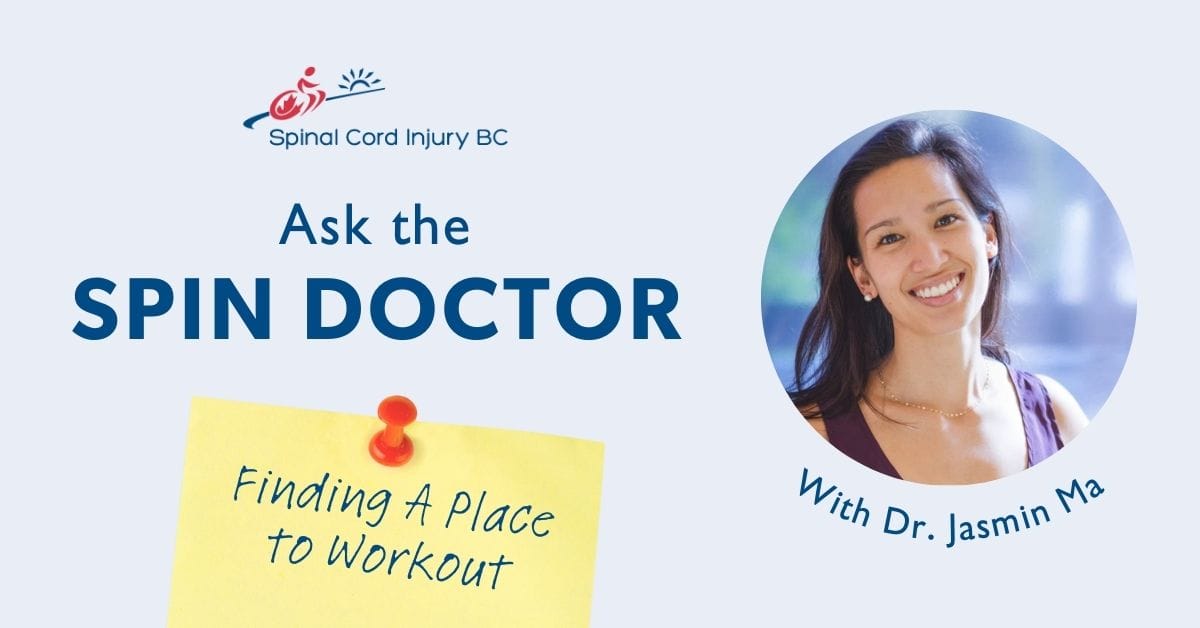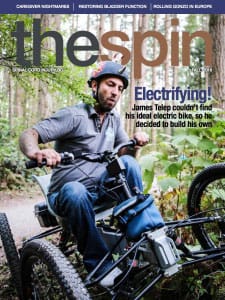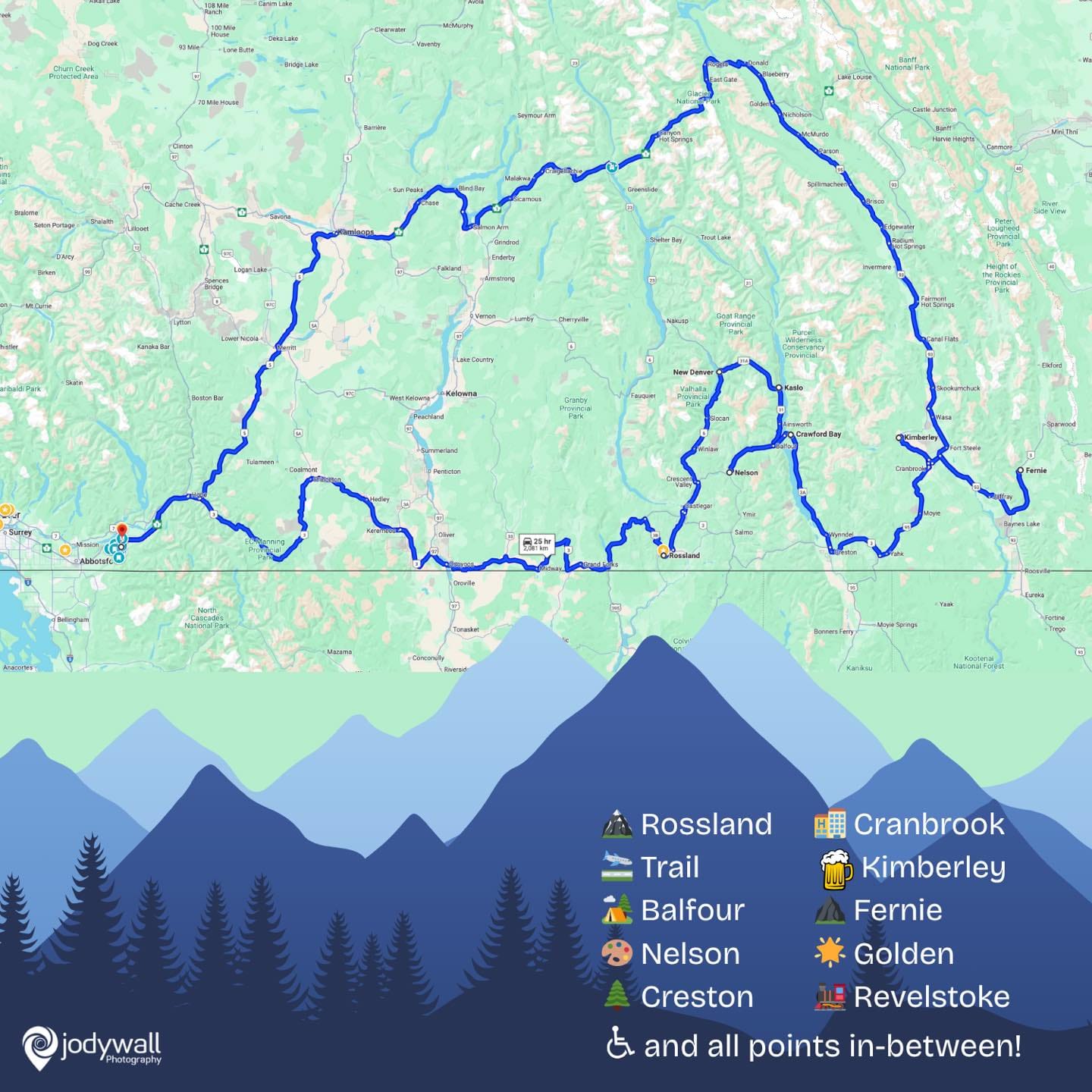
“I want to exercise in a gym, but I don’t live in an area where there is a truly accessible facility. I think there are some local gyms that might work, but I’m a little intimidated and not sure how to approach them. Do you have any advice?” Our thanks to Dr. Jasmin Ma, adapted personal trainer and researcher in Health and Exercise Sciences at UBC Okanagan, for stepping in to answer this question
I love getting this question. I believe, where there’s a will, there’s always a way we can adapt a space for everyone.
I start by answering three questions: Who can help? How can we best adapt the facility/equipment that’s available? And what are the alternatives to the gym?
At the gym, the most likely people who can help are staff. Don’t be intimidated—most gym staff I’ve encountered are enthusiastic about helping everybody get fit.

Start by asking if there are any staff who have knowledge about working with people with disabilities. Sometimes being specific about the areas you might need assistance with can give staff a better sense of how they can help (for example, needing grip assistance, or enough space at a piece of equipment for your wheelchair). However, don’t be surprised if the gym doesn’t have disability-knowledgeable staff. Most will be willing to help, so think of it as a mutual learning opportunity. Also, often times you can request to have an assistant, such as a friend or caregiver, come in with you (most times for free).
Also ask if there is any equipment that can be or is adapted. Again, the gym might not have specialized adapted equipment (or even an answer), but it doesn’t hurt to ask. I’ve posed this question to many gym managers and often received a positive response—either asking how they can learn to make their space more accessible or expressing a willingness to source some adapted equipment.
As for how to best adapt the facility/equipment, this question requires some creativity and trial and error—which is the fun part! There are several pieces of equipment that are typically found in any gym that can easily be adapted. For example, free weights (or dumbbells) can often be used by anyone, disabled or otherwise, for bicep curls, shoulder presses, bent over rows, and straight arm overhead rotations. Free weights are especially advantageous for engaging stabilizing muscles and can add a challenge to the core for those that have the activation. Also, pulley machines are a common staple in the gym, and often allow anyone to do exercises such as lat pulldowns, tricep push downs, shoulder abduction/adduction/flexion/extensions, seated rows, and more. If you’re a manual wheelchair user, I always recommend “pull” exercises with pulleys to help counteract sometimes over-developed chest muscles and strengthen back muscles.
There are some additional considerations.
The first is grip. For those who need a little extra help with grip, try Active Hands (www.activehands.com) or have an attendant help you wrap tensor bandages around the hand while gripping the equipment. Note that this adaptation can be a bit time consuming, so I’d typically only recommend it if you’re using cardio equipment like an arm ergometer, where an extended amount of time is spent using the machine. Wrist hooks are another option and are a common accessory gyms will already have—these are especially helpful for supplementing your grip when using the pulley or bar.
Second is specialized equipment for people with disabilities. These pieces may be hard to find, but can sometimes be added to a gym if you (and others) keep asking for them! These include an arm ergometer or arm bike (my favourite piece of cardio equipment), rowing machine with an adapted seat, medicine balls with wrist straps, cuff weights, and weight machines with removable seating.
As for alternatives to the gym, there are days when the weather, traffic, or motivation is less than ideal and a home workout can help alleviate these barriers. Here are some equipment and exercise ideas to make your own home gym:
- Resistance bands (you can do almost any exercise you would do with a machine with these bands—check out Active Homes at SCIActionCanada.ca for ideas)
- Body weight exercises (push-ups, scapular retractions, modified plank)
- Household items for weights (cans, soap jugs, almost anything you buy from Costco)
- Free weights, which can be purchased inexpensively online at Amazon or Canadian Tire ($5-$25 depending on the weight)
- Yoga and stretching exercises (great for helping to tame spasticity)
- Wheeling (listen to your body and avoid overuse injuries)
- Dance (one of my former clients has a blast holding dance parties with her kids).
As a goal, the Spinal Cord Injury Physical Activity Guidelines recommend at least 20 minutes of moderate to vigorous aerobic activity twice a week, as well as strength training incorporating all major functioning muscle groups twice a week. Regardless of where or how you do it, you should enjoy your exercise—it’s a lifestyle. If it’s not the gym, maybe it’s handcycle rides with family, sports with friends, exercise classes, wheels on the track, or dancing like nobody’s watching—the goal is to get your physical activity in a sustainable and enjoyable way.
This article was originally published in the Fall 2018 issue of The Spin. Read more stories from this issue, including:
- Caregiver Nightmares
- Restoring Bladder Function
- Europe Travel
And more!




